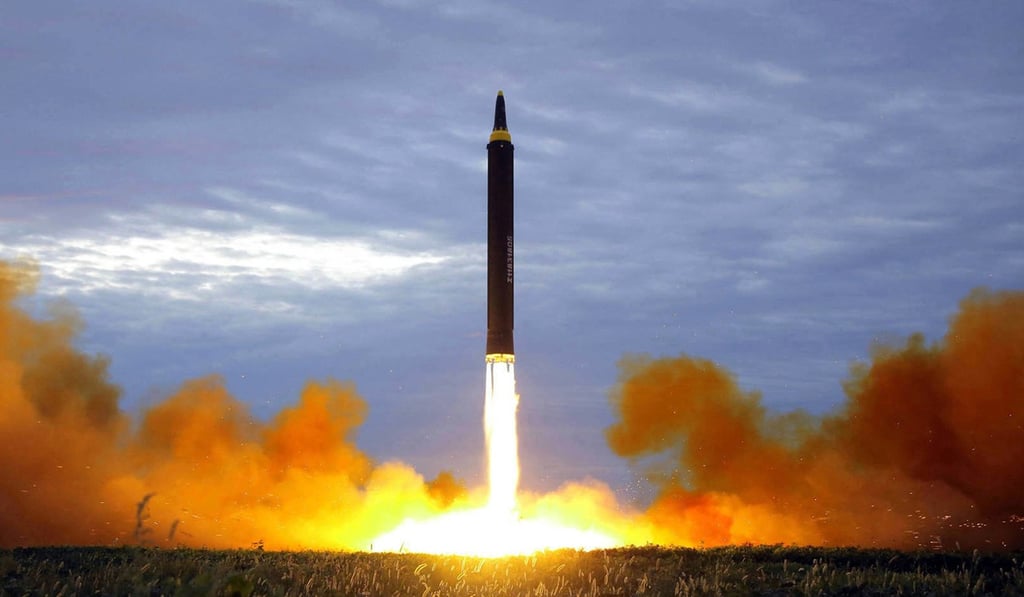Advertisement
Was North Korea’s missile test a sign Pyongyang is getting impatient?
- Analysts say Kim Jong-un wanted to send a message to China and the US that it will not succumb to the pressure of economic sanctions
- Choice of weapon also suggests Pyongyang was keen not to cause too much upset ahead of important meetings next week in Beijing and Vladivostok
Reading Time:3 minutes
Why you can trust SCMP

North Korea’s firing of a new “tactical guided weapon” on Wednesday was intended as a warning to China and the United States that it is running out of patience with the UN sanctions imposed against it, analysts say.
According to a report published on Thursday by the Korean Central News Agency, the leader of the hermit state, Kim Jong-un, “supervised and guided the test firing of a new type of tactical guided weapon by the Academy of Defence Science”.
“The development of the weapon system serves as an event of very weighty significance in increasing the combat power of the People’s Army,” he was quoted as saying.
Advertisement
The report did not specify what type of weapon was fired.

Advertisement
The move comes at a time of stalled negotiations on the issue of North Korea’s denuclearisation, and less than two months after the collapse of the second summit between Kim and US President Donald Trump in the Vietnamese capital Hanoi at the end of February.
Advertisement
Select Voice
Choose your listening speed
Get through articles 2x faster
1.25x
250 WPM
Slow
Average
Fast
1.25x